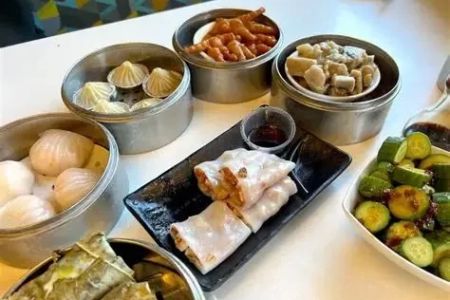- 1-Understanding-the-Chinese-Bakery-Market
- 2-Business-Planning-and-Legal-Requirements
- 3-Choosing-the-Right-Location-and-Layout
- 4-Crafting-Authentic-Chinese-Bakery-Recipes
- 5-Marketing-and-Building-Your-Customer-Base
- 6-Lessons-from-Successful-Chinese-Bakeries
1. Understanding the Chinese Bakery Market in the USA
Starting a Chinese bakery in the USA means entering a niche market with growing popularity. Chinese bakeries offer unique items such as egg tarts, pineapple buns, mooncakes, and steamed buns, blending traditional Asian flavors with Western-style baked goods. Understanding your target customers is crucial, whether you’re catering to the Asian-American community, adventurous foodies, or locals curious about authentic Chinese pastries.
Market research can reveal demand trends, competitor analysis, and regional preferences that help you position your bakery successfully.
2. Business Planning and Legal Requirements
A detailed business plan outlines your goals, startup costs, pricing strategies, and growth plans. Legal compliance includes obtaining food service licenses, health department approvals, and registering your business with local authorities. You’ll also need to consider insurance and employment laws if hiring staff.
Financial planning is essential to cover initial investments such as equipment, ingredients, and rental deposits.
3. Choosing the Right Location and Layout
Location is key to visibility and foot traffic. High-density urban areas with diverse populations or near Chinatown districts are ideal. Consider spaces with good kitchen infrastructure and enough room for display cases and customer seating.
Layout should focus on workflow efficiency, hygiene, and inviting ambiance, encouraging customers to linger and return.
4. Crafting Authentic Chinese Bakery Recipes
The heart of a successful bakery lies in its recipes. Authenticity balanced with adaptation for American tastes can set you apart. Experiment with classic items like char siu buns and lotus seed pastries, ensuring high-quality ingredients and consistent preparation. Consider sourcing specialty ingredients through Asian markets or wholesalers.
Offering seasonal specialties such as mooncakes during Mid-Autumn Festival can also attract culturally engaged customers.
5. Marketing and Building Your Customer Base
Effective marketing combines traditional and digital strategies. Engage with local communities through events and partnerships, and build a strong online presence with social media showcasing your products and story. Customer reviews and word-of-mouth remain powerful tools in the food business.
Offering promotions, loyalty programs, and sampling events can boost visibility and repeat business.
6. Lessons from Successful Chinese Bakeries
Take inspiration from thriving bakeries that blend tradition and innovation. For example, a bakery in San Francisco grew by embracing social media marketing and diversifying its menu to include vegan options. Their founder emphasizes consistency and community engagement as keys to success.
Learning from these examples helps new entrepreneurs avoid pitfalls and build lasting customer relationships.
For those eager to dive deeper into the world of Chinese baking and entrepreneurship, Chinese Food offers valuable resources, product recommendations, and expert advice to help you start and grow your bakery with confidence.







